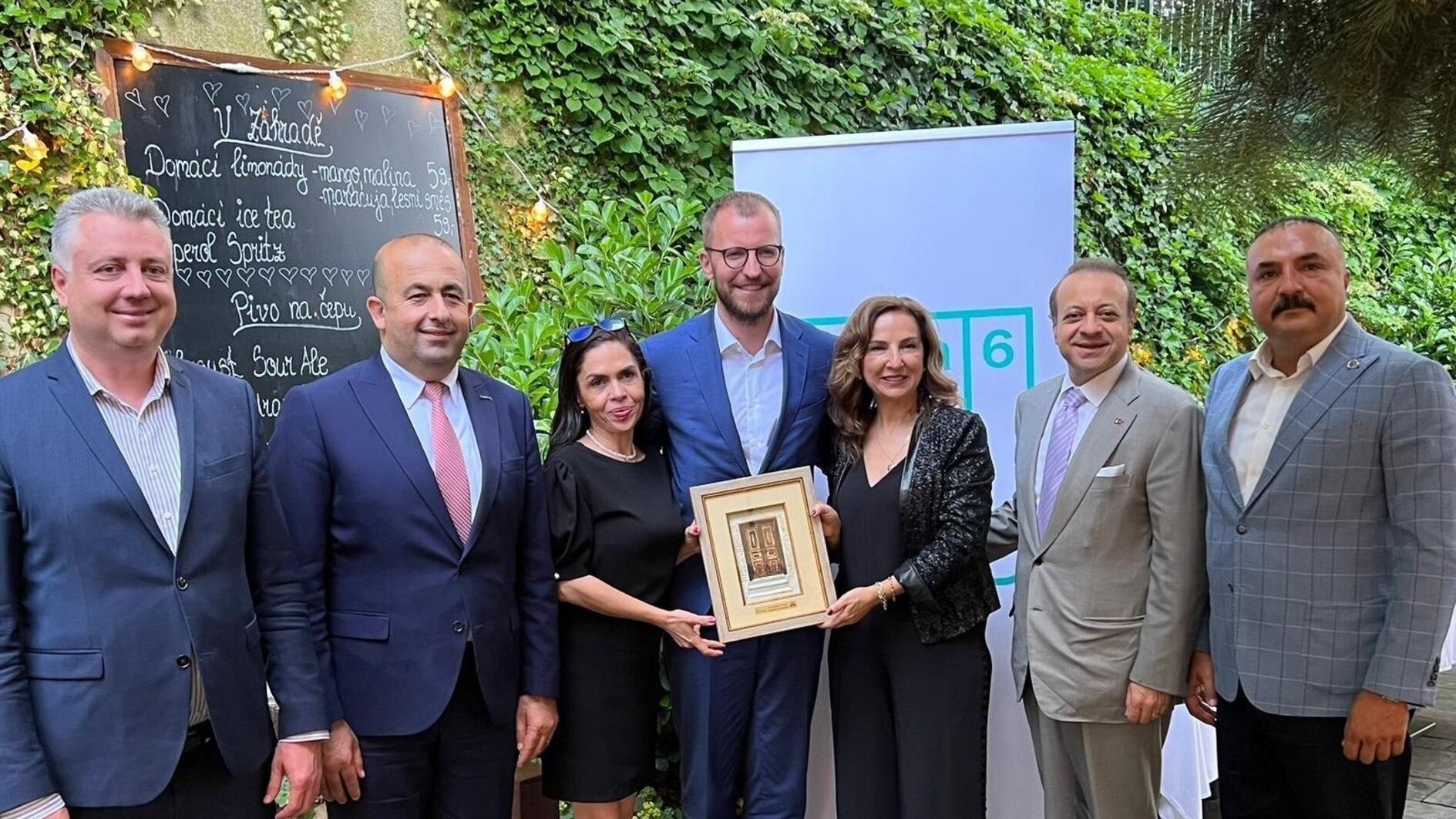New book approaches Ottoman history through jewelry
ISTANBUL - Hürriyet Daily News

When the Ottoman Empire began to move into a period of decline and when land losses reached their peak, a denial of the slow downward trend was reflected in the jewelry designs of the time.
In examining a dynastic jewelry collection, art historian and novelist Gül İrepoğlu’s latest book reveals that as the Ottoman Empire approached its end, jewelry manufactured at the time decreased in quality despite an increase in the size of gems used.On the whole, the book, titled “Imperial Ottoman Jewelry: Reading History through Jewelry,” offers an alternative way of learning about the history of the Ottoman Empire’s journey from magnificence to decay. The book presents a fresh attempt at cultural history writing, examining a rather new and rarely studied field for both Ottoman historians and general readers alike.
According to İrepoğlu’s research, jewelry was seem most during the empire’s growth period, which could be traced back to the reign of the Selim I. “In the 16th century the craftsmanship of the goldsmiths is excellent and the priority is a colorful design. This continued until Ahmed I’s reign. But after him, although the interest in jewelry continued, the quality drastically dropped. Hand-made pieces were replaced with standardized, molded mountings,” İrepoğlu said.
When the empire began to move into a period of decline and when land losses reached their peak, a denial of the slow downward trend was reflected in the jewelry designs of the time, similar to the case of the construction of Yıldız and Dolmabahçe palaces.
“When the empire was literally sinking, what the Ottoman rulers could only think to do was to hide it. In order to give a falsified impression of welfare and wealth, they liberally emptied the treasury. This is very noticeable in jewelry designs. The worse the empire got, the bigger the gems on the pieces of jewelry of grew. A fake magnificence was shown off at a symbolic level to conceal the decay of the empire, which had already become too visible to hide,” she said.

Gül İrepoğlu
Book presents an opening
İrepoğlu carefully described her book as just an opening to an extremely rich field of study, adding that she would continue her research in Ottoman jewelry with a study of the Sultan’s aigrettes.
The roots of the book date back to 1986 when İrepoğlu published her first article on the Ottoman dynasty’s jewelry collection. In the following years, İrepoğlu continued to collect data about the jewelry collections of world dynasties, mostly through museums’ souvenir shops. “I made myself a huge library on jewelry out of museum bookshops,” she said. Similarly, İrepoğlu’s book is on sale at the Topkapı Palace’s souvenir shop.
“My chief research sources among all of Topkapı’s archival documents were inheritance registries known as ‘muhallefat.’ According to Ottoman legislation, when a statesman or a member of the dynasty dies, all his property is counted and officially registered. As there is no private property concept in the Ottoman Empire and everything in Ottoman territory, including people, is the sultan’s property, there is no inheritance law. After the property of the deceased was counted, all of it was transferred to the Ottoman Treasury. It was the sultan’s prerogative to either donate a portion of the inheritance to the deceased’s inheritors so that they could live on it. However, the sultan did not have to grant that,” she said.
Letters and diaries
İrepoğlu’s second basic resource for research was letters and diaries written by members of the dynasty. One very sad example was a letter written by Safiye Sultan, wife of Sultan Murad III, who used to be a very powerful figure during her son Mehmed III’s reign, İrepoğlu said. Upon the ascension of her son Mehmed III to the throne in 1595.
“After Mehmed III’s death, Ahmed I ascended on the throne. He broke with the fratricide tradition and sent his brother Mustafa to live at the old palace at Beyazıt Square, along with their grandmother Safiye Sultan. And Safiye Sultan’s property was confiscated in the process. In this letter that I found in the Topkapı Palace archive, Safiye Sultan claims her jewels back, saying she did not inherit them but had bought them with her own allowance.” İrepoğlu said this story is very instrumental in understanding what the concept of jewelry stood for in a culture that has no notion of private property,” the author said.
“When we are talking about jewelry, the reader should immediately think of the Ottoman sultans, not their wives. Then, the reader should consider [the jewelry] as a belonging, not a means of adornment for Harem women,” she said.
Süleyman the Magnificent passes through Belgrade
“Never, in all its history, had the city of Belgrade been witness to such magnificence. The Ottoman Sultan Süleyman was passing through the city on his way to Vienna. His mere presence [was] radiating out to the city as he crossed it from one end to the other, as the people, his subjects and diplomats alike, watch in wonder the most-stately occasion they will ever see.”
“Venetian artists would later depict [Süleyman] wearing this dazzling crown: There would be three woodcuts, but the most well-known would be the engraving made by Agostino Veneziano. … This peerless jewel embodies the ‘stance’ of the Ottoman Empire at the time. Despite the unusually European-inspired crown shape for a sultan who would normally decorate his turbans with aigrettes and plumes, it is also uniquely Ottoman: Its imposing, helmet-like shape has to be a direct reference to the military triumphs of Sultan Süleyman.”
.
Story of the Topkapı dagger
The gold, jeweled dagger, famously referred to as the Topkapı dagger, was commissioned by Sultan Mahmud I as a gift for Iran’s Nadir Shah. “In the 18th century, the Ottomans and Persians fought a series of wars that were finalized with the signature of the Treaty of Qasr-e Shirin in 1748. After peace was restored, Nadir Shah sent Sultan Mahmud an extraordinarily fashioned and ornate throne, which he had acquired from a campaign to India, as a diplomatic gift. The magnificence of the throne was meant to suggest Persia’s grandeur over the Ottomans, as all diplomatic gifts did in those times. Panicked to see the grandeur of the gift, the Ottomans began to prepare a series of valuables to be sent in return and through which they could express their grandeur over Persia,” İrepoğlu said.
Among those gifts was the dagger. Upon receiving news of the shah’s assassination, the diplomatic mission returned from the Persian border and the fabulous dagger found its eternal place of rest in the Ottoman Treasury.
















